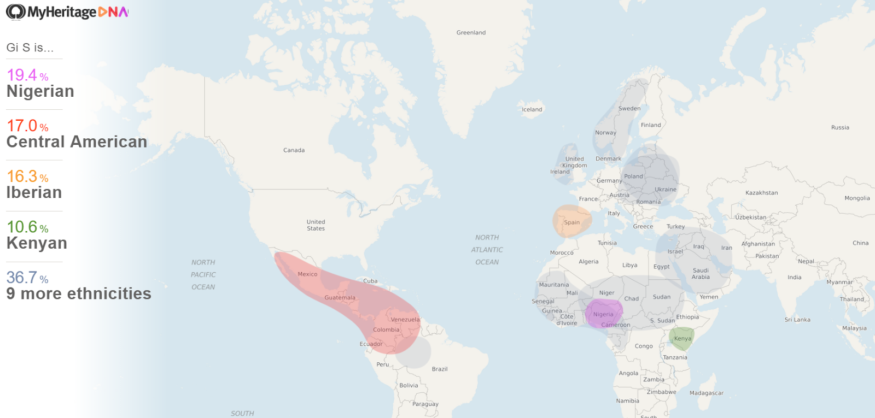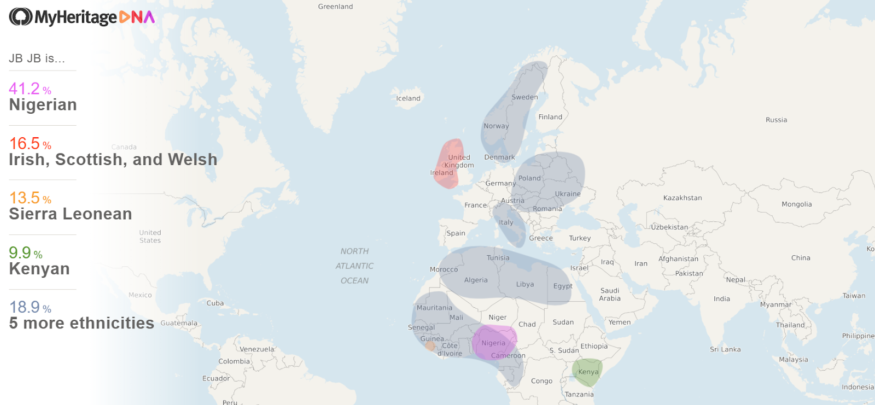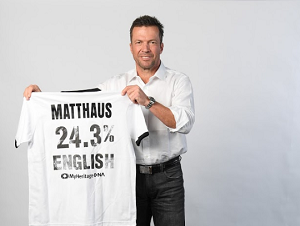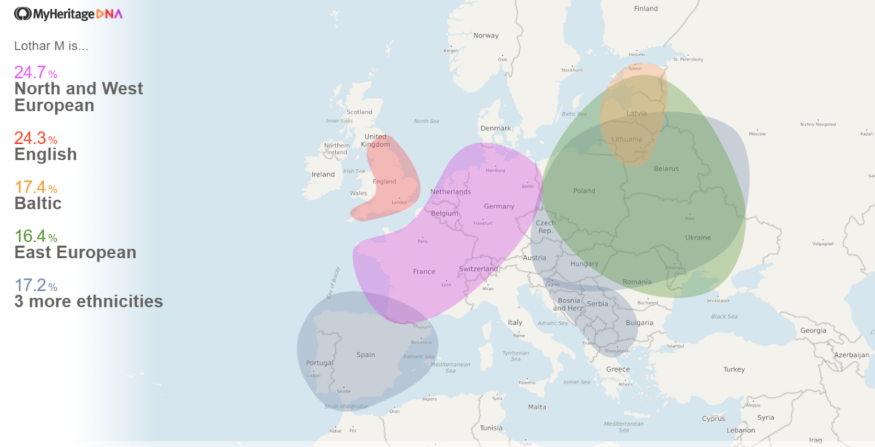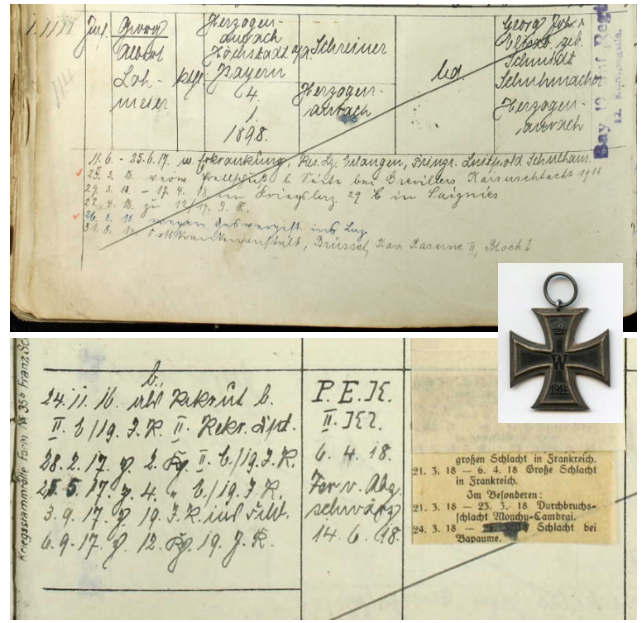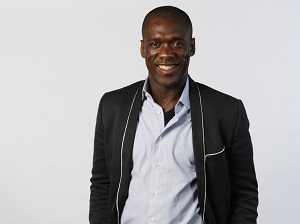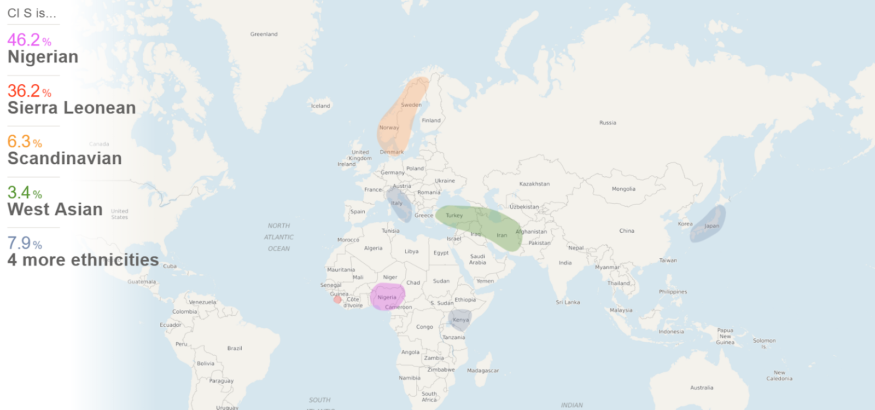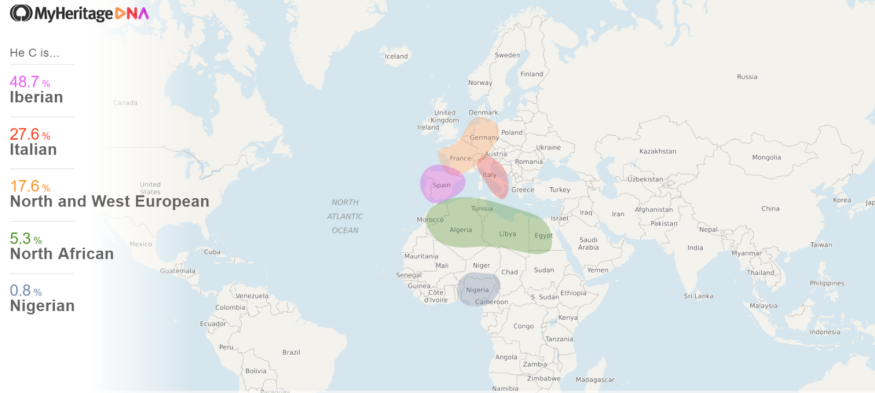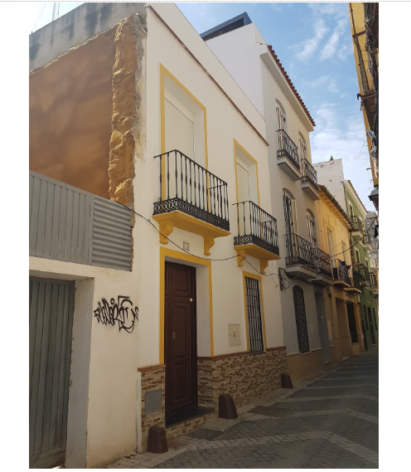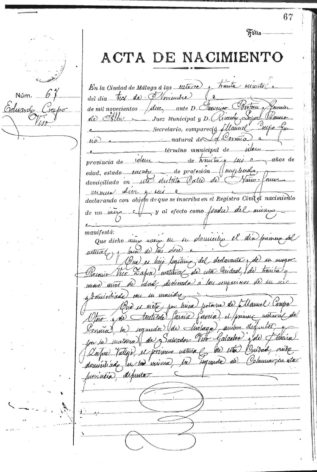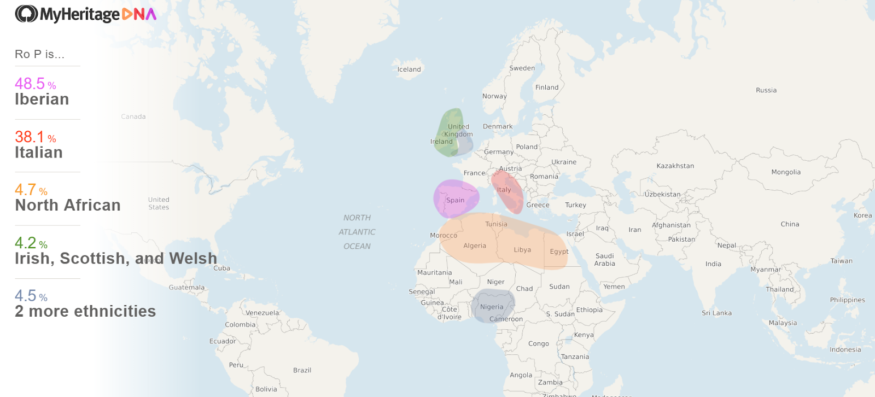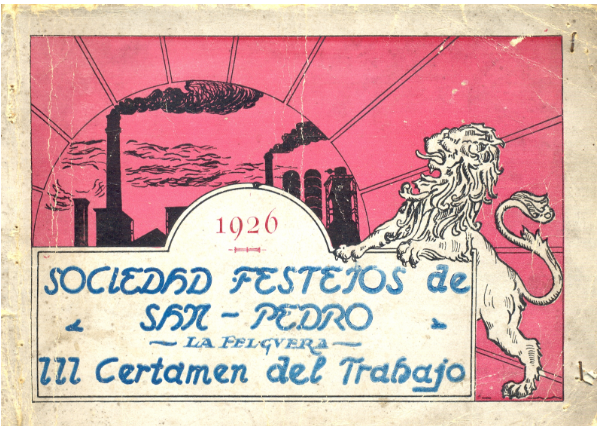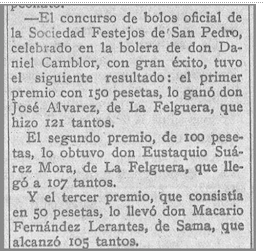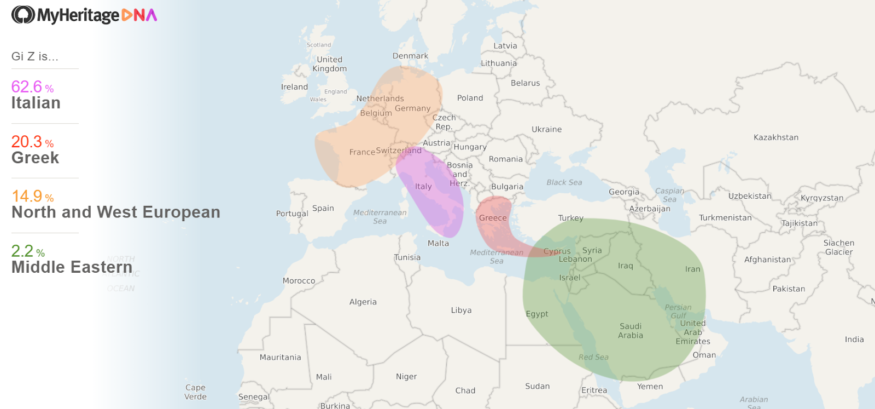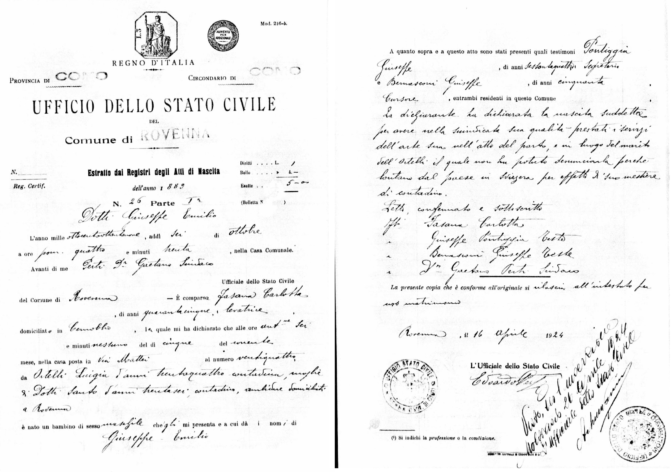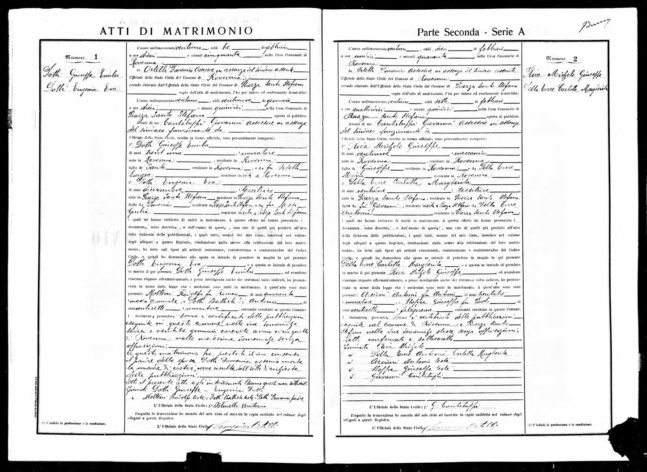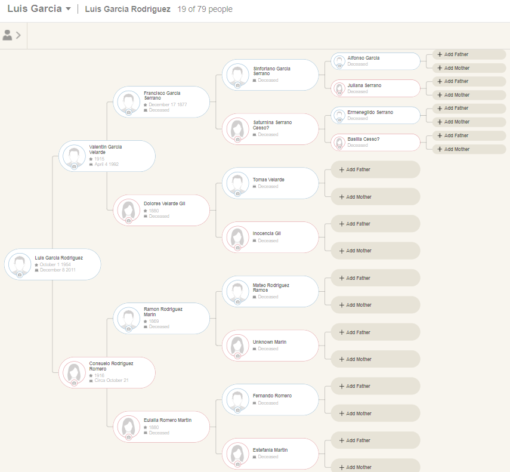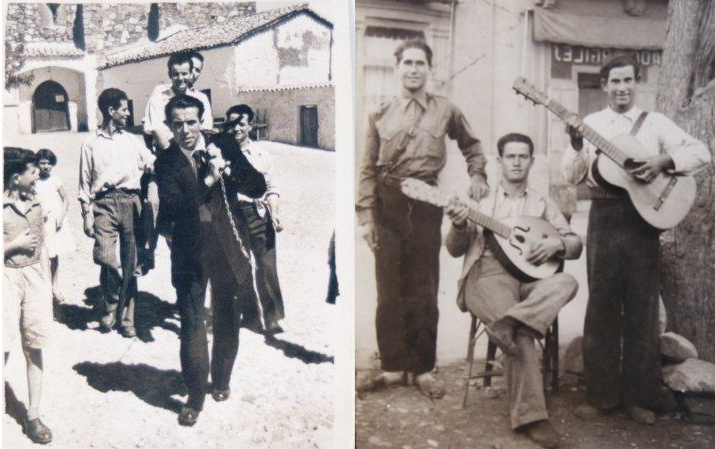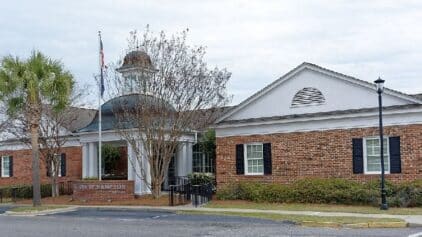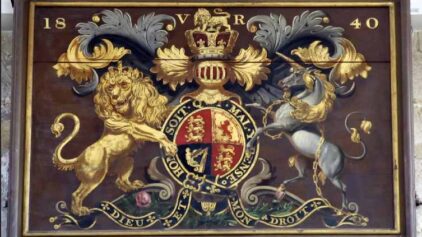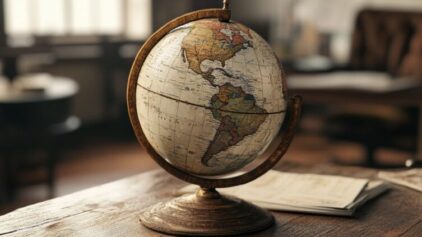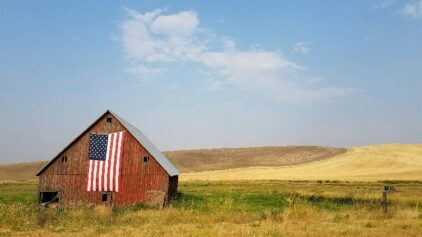Incredible Family History Discoveries for Legendary Football Players
- By Talya
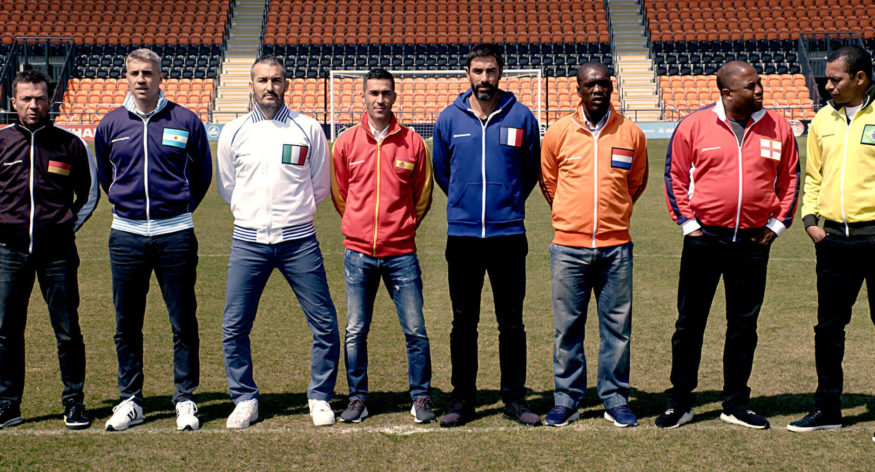

We gathered together 8 legendary football players to reveal to them their ethnicity breakdowns with MyHeritage DNA. The retired players, Gilberto Silva (Brazil), John Barnes (England), Lothar Matthäus (Germany), Clarence Seedorf (Holland), Hernán Crespo (Argentina), Robert Pires (France), Gianluca Zambrotta (Italy), and Luis García (Spain) met in London where they hashed out old rivalries as they prepared to learn more about their ancestral roots.
Learn more about the players and their incredible family history discoveries on the special Football DNA website.
The players learned many new things about their family history, including some shocking results! Watch their discussion moderated by renowned sports presenter Kelly Cates here:
Read on to learn more about the players, their surprising ethnicity results, and their incredible family history discoveries.
Gilberto is a former Brazilian soccer player who played for Brazil’s national team a total of 93 times. In 2002, he helped the Brazilian national team win the international tournament, playing in all seven of Brazil’s matches.
He has a very diverse ethnic background: 47.7% African (Nigerian, West African, and Sierra Leonean), 31.7% European (Iberian; Irish, Scottish, and Welsh; Scandinavian; and East European), and almost 18% Central American ethnicity.
Gilberto grew up in Vila Luciânia, a village in the state of Minas Gerais, an inland state in southeastern Brazil. Vila Luciânia was founded for employees of the sugar industry. The Silva family lived there for many years as Gilberto’s father and grandfather worked in this industry.
In place of the regular currency, the sugar industry employees would get paid in boró tickets. With these tickets, the family bought food and other supplies.
Jamaican-born John Barnes is a retired professional soccer player and manager who played 79 games for England. His huge fan base in Liverpool named him one of the most popular players of all time.
Barnes’s family came from Trinidad and Jamaica. His MyHeritage DNA results show a high percentage of African ethnicities. He is 41.2% Nigerian, and only 16.5% Irish, Scottish, and Welsh. He is also 13.5% Sierra Leonean, and almost 10% Kenyan, 16.3% Iberian, 10.9% North and West Europe.
Barnes believes his Irish, Scottish, and Welsh DNA originally came from Scotland. Scottish planters in Jamaica bought thousands of slaves to work in sugar and tobacco fields. They made huge profits, boosting the Scottish economy.
John had numerous DNA Matches spread out all over the world including in the US, Brazil, Portugal, Germany, and Canada. Some of John’s DNA Matches had already begun building the Barnes family tree. One family member had a whopping 35,000 people in their family tree!
Lothar Matthäus, born and raised in Germany, represented the national team in 150 games and was named European soccer player of the year after leading West Germany to victory in a 1990 tournament.
Matthäus’s DNA test showed that he is 24.7% North and West European (usually this means German, French, and/or Dutch), 17.4% Baltic, and 16.4% East European. His results also showed that he is 24.3% English, quite surprising for a German soccer player, since one of the fiercest rivalries in soccer history is between England and Germany.
Through our research, we uncovered Lothar Matthäus’s grandfather, Georg Albert Lohmeier, born in 1898, who served during the First World War in the 19th Bavarian Infantry Regiment and fought in several French battles in 1918. On June 14th, 1918, he was awarded the medal Preußisches Eisernes Kreuz II. Klasse, otherwise known as the “Iron Cross”.
Interestingly, Lothar’s great-grandfather Johan Georg Lohmeier, born in 1870, also fought in WWI alongside his son, Georg Albert Lohmeier.
Originally born in Suriname, Clarence Clyde Seedorf mostly grew up in the Netherlands where he represented the national team 87 times. Clarence is considered one of the most accomplished Dutch players as he is the only player to have won a championship with three different teams.
MyHeritage DNA showed that Seedorf is 46.2% Nigerian, 36.2% Sierra Leonean, 6.3% Scandinavian, 3.4% West Asian, with a further 7.9% from a mixture of other regions.
Family folklore tells that the forebears of the Seedorf family were native Indians from the Boven district in Suriname. A Moravian missionary found a child from the native population alone in the forest and brought him to Paramaribo were they registered him at the Seedorf missionary only for him to ultimately end up as a slave on the Berg en Dal plantation. Clarence’s direct ancestor, Patientie Seedorf, was one of four slaves that adopted the last name Seedorf when they were emancipated in 1873.
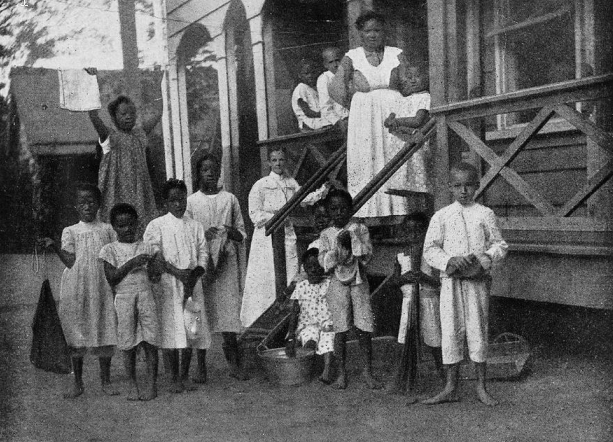
Boarding School for children of Surinamese missionaries, 1915. Source: Vier maanden in Suriname. H. Weiss. Nijkerk: G.F. Callenbach, 1915.
The slaves of Berg en Dal received a Moravian education and a strong foundation in Christianity. They ultimately became missionaries themselves. Both Clarence’s great-great-grandfather and great-grandfather, Adam Seedorf, were devout evangelical Christians. Due to the missionary work of his parents, Clarence’s grandfather, Fredrik and two siblings grew up in “Klein Welka”, a small boarding school for children of missionaries.
Hernán is a former Argentine soccer player who represented the national team in 64 matches and scored more than 300 goals. Argentina is known for its exceptional, never-wavering soccer prowess and Hernán exemplified this throughout his career.
While Crespo doesn’t have South American roots, he does have Spanish-speaking roots from Spain, being 48.7% Iberian. He is also 27.6% Italian, and 17.6% North and West European.
Before his family came to Argentina, they lived in Nuño Gómez 16, Malaga where Crespo’s grandfather, Eduardo Crespo Viso, was born. His birth certificate from November 1, 1910, lists this address.

Manuel Crespo García’s immigration record to Argentina (left), and the actual ship that the family traveled on (right).
When Eduardo Crespo Viso turned one year old, his father, Manuel Crespo García and mother Rosario Del Viso Zafra, (Hernán’s great-grandparents) emigrated from Malaga, Spain, aboard the ship León XIII. They arrived at the port of Buenos Aires on December 24, 1911.
Robert was born and raised in France, representing their national team in 79 games. He then moved on to play for the English Arsenal team, where he helped his team win three tournaments and two League titles.
According to his MyHeritage DNA test results, Pires is 48.5% Iberian, 38.1% Italian and 4.2% Irish, Scottish and Welsh.
It seems that Robert’s athletic abilities may be genetic, as his great-grandfather, Don Macario Fernández Lerantes was also a sportsman. In July 1926, Don Macario won third place in the official bowling competition of the Sociedad de Festejos de San Pedro, scoring 105 points.
Italian player Gianluca Zambrotta represented his national team in 98 matches. He played for several Italian teams as well, helping Italy win the international tournament in 2006. Born in Como, Italy where both his parents and grandparents were from, he started playing at age 17 for the Como team.
Zambrotta is 62.6% Italian, 20.3% Greek, and 14.9% North and West European.
Gianluca’s great-grandfather, Giuseppe Dotti, was born in Rovenna Como, Italy. The midwife declared the birth because Giuseppe’s father, Santo Dotti, was away in Switzerland at the time working as a farmer.
In Giuseppe Dotti’s marriage certificate, there are more details regarding his efforts to help Italy mobilize for the Italo-Austrian war in 1915.
Born and raised in Spain, Luis played for Barcelona as well as a Madrid team and represented the national team in 25 matches. At the end of his career, he played for Liverpool, helping his team win an international tournament.
Luis’s ethnicity breakdown is 84.7% Iberian, 11.3% Sephardic Jewish — North African and 4% Irish, Scottish and Welsh.
Luis has many DNA Matches on MyHeritage from around the world including Great Britain, France, USA, Norway, and Portugal. Some MyHeritage users with whom Luis matched are avid genealogists, with one newly discovered relative having over 15,000 people in their family tree.
Luis’ MyHeritage DNA results indicated 11.3% Sephardic Jewish heritage. Our research on his family history confirmed that his ancestors on his maternal side had the surname “Mejias” which has Jewish Sephardic origins. During the Spanish Inquisition, many Jews changed their surnames to Castilian names. It is possible that the original family name was Messiah, which became Mesias, and eventually Mejias.
The majority of Luis’s Spanish ancestry comes from the province of Ciudad Real, mainly from the village of Saceruela.
Every year, the villagers used to celebrate the “Dia de Los Quintos” in Saceruela. It was a day when boys went to the city hall to measure and weigh themselves for their military service but also a day filled with music and joyous celebration. We found two fantastic photos of Luis’s great-uncle, Rodrigo Mejias Castillo, on that day. He was a leading musician who joined the celebration.
Summary
We were delighted to have the opportunity to bring together these eight soccer legends to discuss their careers, rivalries, and to delve into their family histories. In addition to rooting for the teams they held strong career allegiances for, many have been cheering on some new national teams — based on newly discovered heritage — during this summer’s tournament.
To learn more about the players’ family histories, ethnicity results, and to watch them discuss their discoveries, visit Football DNA.

